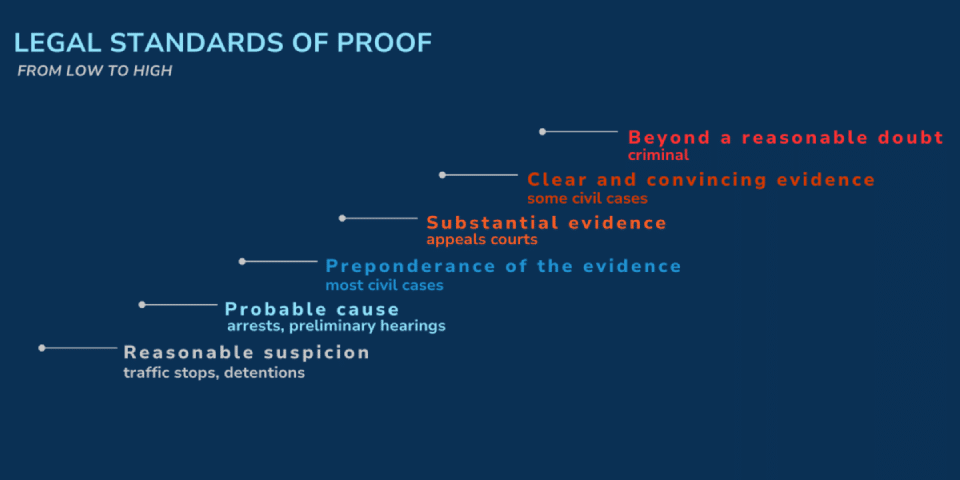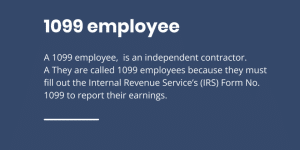Updated March 19, 2025
Understanding the Burden of Proof for Wrongful Termination in California
When facing the daunting experience of wrongful termination, understanding the burden of proof becomes crucial. In California, proving wrongful termination involves navigating complex legal waters, where employees must establish that their termination was unjust and violated specific laws. This article will delve into the intricacies of the burden of proof, offering a comprehensive guide for individuals who find themselves in this challenging situation.
What is Wrongful Termination?
Wrongful termination refers to the dismissal of an employee for reasons that violate state or federal laws. Even if an employee is classified as "at-will," which generally allows employers to terminate employment for any non-discriminatory reason, there are still legal protections in place. Employees cannot be terminated for reasons such as discrimination, retaliation, or breaches of contract.
Key Legal Protections
- Discrimination: Employees are protected from being fired based on race, gender, age, disability, or other protected characteristics.
- Retaliation: It is illegal for employers to terminate employees for asserting their legal rights, such as filing a complaint about workplace safety or discrimination.
- Breach of Contract: If an employment contract specifies terms of employment, terminating an employee in violation of those terms can constitute wrongful termination.
- Public Policy Violations: Employees cannot be fired for reasons that contravene public policy, such as refusing to engage in illegal activities.
The Burden of Proof: An Overview
In wrongful termination cases, the burden of proof lies primarily with the employee. This means that the employee must provide sufficient evidence to support their claim that the termination was unlawful. The process typically follows a structured approach, where the employee must first establish a prima facie case of wrongful termination.
What is Prima facie?
“Prima facie” is a Latin phrase meaning “at first sight” or “on the face of it”, used in legal contexts to describe evidence or a case that, at first glance, appears sufficient to establish a fact or claim, unless contradicted by further evidence.
Establishing a Prima Facie Case
To establish a prima facie case, the employee must demonstrate the following:
- Employment Relationship: Proof that an employment relationship existed.
- Termination: Evidence that the employee was terminated.
- Illegal Reason: A causal connection between the termination and an illegal reason, such as discrimination or retaliation.
Once the employee establishes this initial case, the burden shifts to the employer to provide a legitimate, non-discriminatory reason for the termination.
The Employer’s Response
After the employee has presented their prima facie case, the employer must articulate a legitimate reason for the dismissal. This could include factors such as:
- Poor Performance: Claims of inadequate job performance or failure to meet established standards.
- Misconduct: Allegations of workplace misconduct or violations of company policy.
- Economic Necessity: Justifications related to company downsizing or financial constraints.
It is important to note that the employer’s explanation must be credible and supported by evidence. If the employer fails to provide a convincing rationale, the employee may prevail in their wrongful termination claim.
Proving Pretext
After the employer presents their reason for termination, the employee has the opportunity to demonstrate that the employer’s explanation is merely a pretext for unlawful discrimination or retaliation. This involves showing that the employer’s stated reason is not genuine and that the real motive behind the termination was illegal.
Evidence to Prove Pretext
- Comparative Evidence: Demonstrating that similarly situated employees were treated differently.
- Timing: Establishing a timeline that suggests retaliatory motives, such as termination occurring shortly after a complaint was made.
- Inconsistencies: Highlighting contradictions in the employer’s reasoning or evidence that undermines the legitimacy of their claims.
Types of Evidence Required
To support a wrongful termination claim, employees should gather various types of evidence, including:
- Documentation: Employment contracts, performance reviews, and written communications with the employer.
- Witness Testimonies: Statements from coworkers who may have witnessed discriminatory behavior or can support the employee’s claims.
- Comparative Data: Evidence showing how other employees in similar situations were treated differently.
Importance of Timely Evidence Collection
Gathering evidence promptly after termination is essential. Delaying this process can lead to lost information and weakened claims. Employees are encouraged to document all relevant interactions and circumstances surrounding their termination.
Legal Timeframes for Filing Claims
In California, employees must be aware of the time limits for filing wrongful termination claims. Generally, the statute of limitations varies depending on the nature of the claim:
- Breach of Contract: 2 years from the date of termination.
- Discrimination Claims (FEHA): 3 years from the date of termination.
- Retaliation Claims: Typically 3 years, but can vary based on specific circumstances.
It is crucial to act quickly to preserve the right to pursue legal action.
Seeking Legal Assistance
Navigating the complexities of wrongful termination claims can be overwhelming. Consulting with an experienced employment attorney can significantly enhance an employee’s chances of success. Lawyers can provide valuable guidance on gathering evidence, understanding legal rights, and representing the employee’s interests in negotiations or court proceedings.
Benefits of Legal Representation
- Expertise: Attorneys possess a deep understanding of employment law and can navigate the intricacies of wrongful termination cases.
- Evidence Gathering: Legal professionals can assist in collecting and organizing necessary evidence to build a strong case.
- Negotiation Skills: Attorneys can negotiate settlements with employers, which may save time and resources compared to litigation.
Conclusion
The burden of proof in wrongful termination cases in California rests heavily on the employee. Understanding the legal framework, gathering compelling evidence, and seeking professional assistance from a qualified wrongful termination attorney are essential steps in pursuing a successful claim. Employees have rights, and knowing how to assert those rights can lead to justice and compensation for unlawful termination.
If you believe you have been wrongfully terminated, don’t hesitate to seek legal counsel. The path to justice may be complex, but with the right support, you can navigate the challenges ahead.







